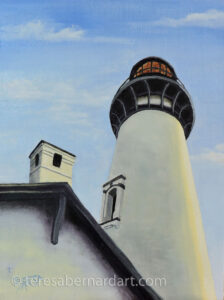Example Of Space In Art

Space is a basic art element that refers to the distance between the area around and within shapes, forms, colors, and lines. Space can be positive or negative. It includes the background, foreground, and middle ground. Both positive and negative space can play essential roles in the overall success of a work of art. By understanding the difference between the two, you will:
-
- Become better at designing unified compositions.
- Be more successful in visually communicating your story.
- Gain important clues about the meaning of an art piece.
Two types of space exist within art — positive space and negative space. Positive space is the actual objects or shapes within an artwork, and negative space is the space around and between those objects. An excellent way to demonstrate positive and negative space is by utilizing Rubin's vase. (Refer to illustration.) As you can see, the vase occupies what would be referred to as positive space, and the space surrounding the vase is negative space. Notice how the negative space is forming silhouettes of two faces in profile.
Positive Space
Positive space is the area or part of the composition that an object or subject occupies. It is usually the main focus of the painting, such as a vase of flowers, fruit, or candle in a still life, a person's face in a portrait, or an animal in a wildlife painting, or a building, trees, and hills in a landscape. When used skillfully, positive space will add interest by enhancing and balancing the negative space in a composition.
Negative Space
Negative space is that empty or open space that surrounds an object. It helps define the object, gives it some breathing room to prevent the painting from being too crowded, and significantly impacts how the art piece is perceived.
An interesting thing about negative space is that it can prompt viewers to seek out subtly hidden images within the negative space, causing your design to get more attention and be remembered while other less interesting works aren't.
Why is negative space so important?
- It can add interest and is an excellent way to draw attention to your works of art. A good balance between great negative space and intrigue will cause the viewer to desire more time to look at your work of art.
- It can draw the viewer in, giving them a sense of inclusion because they discovered a subtle, hidden message or image in the composition. Even though it may be a simple composition, great negative space reveals there is more to the piece than first meets the eye, making it a more rewarding experience for the viewer.
- It gives the eye a "place to rest," thereby adding to the subtle appeal of the composition. The equal amounts of both negative and positive are considered by many to be good design.
Questions
- Does a negative space have shape?
- In what ways is negative space important to the overall success of a composition?
Additional Information
Principles of Good Design: Space
Your Next Art Lesson
If you enjoyed this lesson, be sure to check out another one in this series.
The Basic Elements of Art (Introduction)
Basic Art Element — Color, Part 1
Basic Art Element — Color, Part 2
Basic Art Element — Line
Basic Art Element — Space — You are here
Basic Art Element — Texture
Basic Art Element — Value
More Art Lessons
Good Design Principle: An Introduction
Good Design Principle: Balance
Good Design Principle: Contrast
Good Design Principle: Emphasis
Good Design Principle: Movement
Good Design Principle: Proportion
Good Design Principle: Space
Good Design Principle: Visual Economy
Good Design Principle: Unity
Have a question?
If you have a question about this painting, please contact us, and we'll be happy to answer any of your questions.
Thanks for reading this art lesson!
Feel free to share this with your friends.
UPDATED: 07 June 2021
Enjoy this page? Please share it. Thanks!
Example Of Space In Art
Source: http://teresabernardart.com/basic-art-element-space/
Posted by: madisonbablin1977.blogspot.com

0 Response to "Example Of Space In Art"
Post a Comment